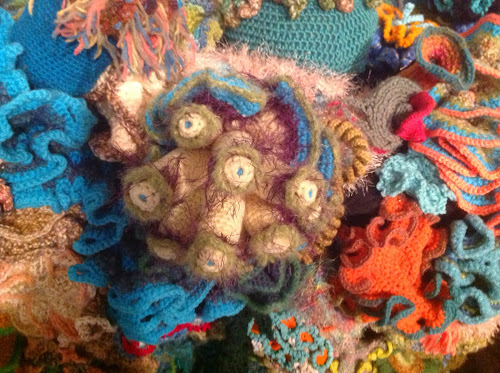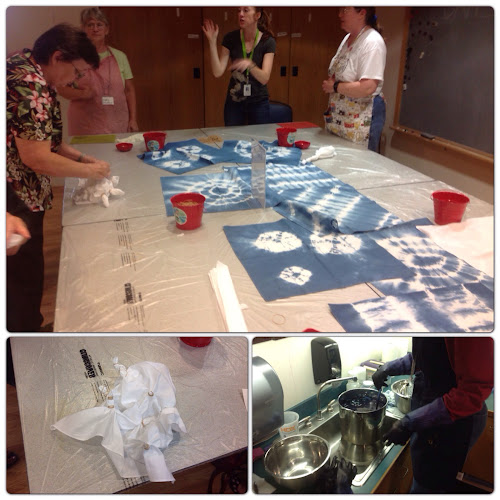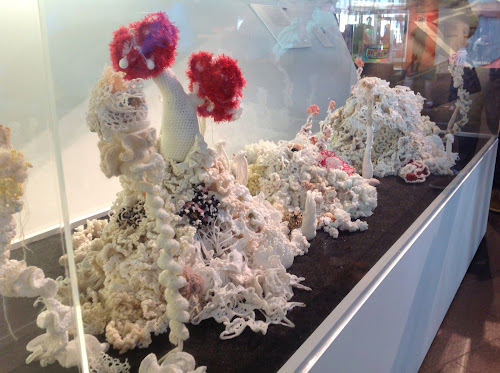Last weekend I went back to the Denver Art Museum to see the the Crochet Coral Reef before it was taken off exhibit. I thought it was the work of the Ladies Handiwork Society out of Denver, but in fact, the story of its creation is much more fascinating than yarn bombing.
 |
| The crochet coral reef stretched out for 20' in a rainbow of color. |
The project is sponsored by the Institute For Figuring, a non-profit Los-Angeles based organization, to bring awareness to the world's oceans and engage the public in science, math, environmental issues and crafting. That's a lot of pressure to put on a lowly crochet hook, but its working. The Crochet Coral Reef has been displayed around the world and has inspired satellite reefs from Chicago to Dublin to Australia.
It was conceived by two transplanted Australian sisters who got hooked, quite literally, on math. Inspired by the Great Barrier Reef, they began experimenting with a technique called hyperbolic crochet, discovered by Dr. Daina Taimina at Cornell University in the 1990s, to develop algorithms for making all sorts of coral creatures. Prior to Dr. Taimina's discovery, it was thought to be impossible to represent hyperbolic space, a type of non-Euclidian geometry, with three-dimensional objects. More information on hyperbolic crochet and the project inspiration can be found on the Crochet Coral Reef Project website and in the project book, An Exploration of the Intersection of Higher Geometry and Feminine Handicraft, by Margaret Wertheim. The book includes directions for crocheting hyperbolic objects. It is available for $20 on the Institute For Figuring website.
 |
| A close up of a portion of the reef shows the variety of shapes and colors in the reef. |
What is especially fun about this project is that in addition to displaying the reef, The Institute For Figuring encourages public participation in crocheting new pieces of reef so that it continues to grow. There was a representative at the DAM teaching visitors how to crochet using this technique and explaining how the stitches created the shapes of hyperbolic space.
When the exhibit leaves Denver this month, it is going to Copenhagen, Denmark. You can see it there or encourage your local institution to host a showing by contacting the Institute.
I was fascinated by the colors and forms of this project before I learned about the math and science behind it. It seems that the crochet hook may not be so lowly after all.
 |
| These yarn jellyfish made me laugh. |
 |
| Small cases showed separate, reef-inspired works. |
 |
| The beaded coral is stunning. |
 |
| This piece really showcases the hyperbolic shapes. |

















